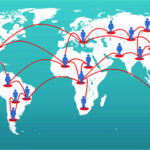President-elect Donald Trump. President-elect Donald Trump may be taking on China’s apparent mercantilism via his Twitter account , but both the U.S. and China are embroiled in a dangerous experiment that could crimp their prospects for employment: investment in automation.
Over the past 70 years, China has had the advantage when it came to manufacturing. The cost of labor, in relative terms, was low while policy makers further boosted the competitiveness of the country’s export structure through the specialization of production, in a nod to Adam Smith’s capitalist treatise "The Wealth of Nations".
But manufacturing jobs in China are massively under […]
Full Post at www.bloomberg.com







